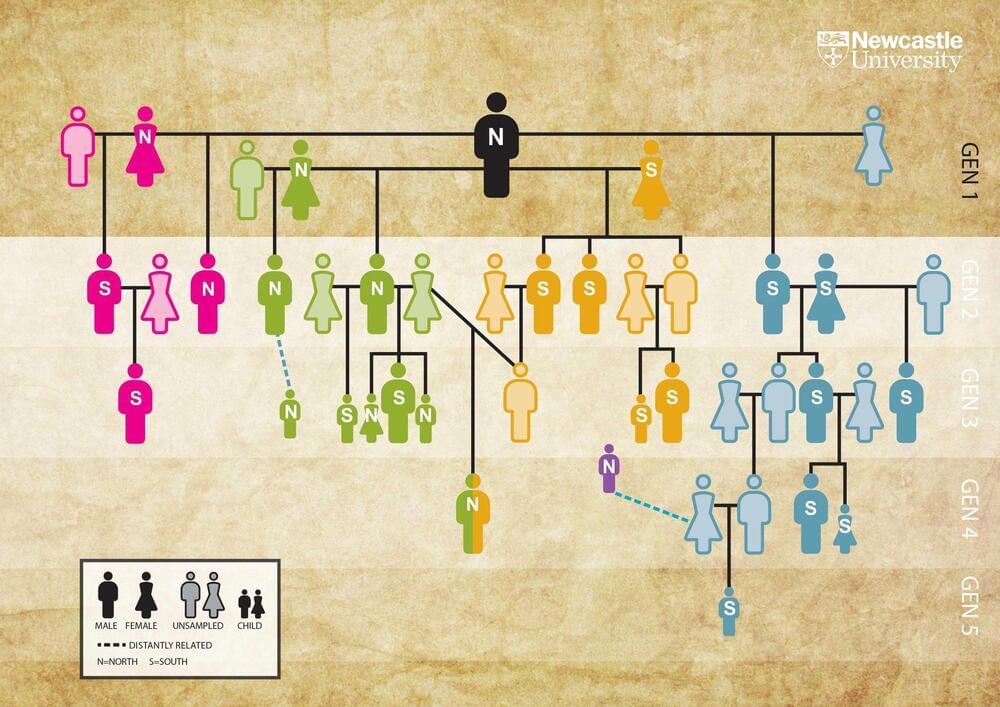Analysis of ancient DNA from one of the best-preserved Neolithic tombs in Britain by a team involving archaeologists from Newcastle University, UK, and geneticists at the University of the Basque Country, University of Vienna and Harvard University, has revealed that most of the people buried there were from five continuous generations of a single extended family. Credit: Newcastle University/Fowler, Olalde et al.
Although the right to use the tomb ran through patrilineal ties, the choice of whether individuals were buried in the north or south chambered area initially depended on the first-generation woman from whom they were descended, suggesting that these first-generation women were socially significant in the memories of this community.
There are also indications that ‘stepsons’ were adopted into the lineage, the researchers say — males whose mother was buried in the tomb but not their biological father, and whose mother had also had children with a male from the patriline. Additionally, the team found no evidence that another eight individuals were biological relatives of those in the family tree, which might further suggest that biological relatedness was not the only criterion for inclusion. However, three of these were women and it is possible that they could have had a partner in the tomb but either did not have any children or had daughters who reached adulthood and left the community so are absent from the tomb.
